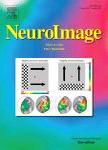版权所有:内蒙古大学图书馆 技术提供:维普资讯• 智图
内蒙古自治区呼和浩特市赛罕区大学西街235号 邮编: 010021

作者机构:QIMR Berghofer Med Res Inst Syst Neurosci Grp Herston Qld 4006 Australia QIMR Berghofer Med Res Inst Ctr Integrat Brain Funct Herston Qld 4006 Australia Univ New South Wales Sch Psychiat Ctr Hlth Brain Ageing CHeBA Sydney NSW Australia Univ New South Wales Sch Psychiat Sydney NSW 2052 Australia Prince Wales Hosp Black Dog Inst Hosp Rd Randwick NSW 2031 Australia Royal Brisbane & Womens Hosp Metro North Mental Hlth Serv Brisbane Qld Australia
出 版 物:《NEUROIMAGE》 (神经图像)
年 卷 期:2017年第145卷第PartA期
页 面:118-129页
核心收录:
学科分类:1002[医学-临床医学] 1001[医学-基础医学(可授医学、理学学位)] 1010[医学-医学技术(可授医学、理学学位)] 1009[医学-特种医学] 10[医学]
基 金:National Health and Medical Research Council Australian Research Council (Center of Excellence for Integrative Brain Function) [CE140100007]
主 题:BRAIN mapping NEURAL circuitry BRAIN anatomy BRAIN weight THRESHOLDING algorithms
摘 要:Densely seeded probabilistic tractography yields weighted networks that are nearly fully connected, hence containing many spurious fibers. It is thus necessary to prune spurious connections from probabilistically derived networks to obtain a more reliable overall estimate of the connectivity. A standard method is to threshold by weight, keeping only the strongest edges. Here, by measuring the consistency of edge weights across subjects, we propose a new thresholding method that aims to reduce the rate of false-positives in group averaged connectivity matrices. Close inspection of the relationship between consistency, weight, and distance suggests that the most consistent edges are in fact those that are strong for their length, rather than simply strong overall. Hence retaining the most consistent edges preserves more long-distance connections than traditional weight-based thresholding, which penalizes long connections for being weak regardless of anatomy. By comparing our thresholded networks to mouse and macaque tracer data, we also show that consistency based thresholding exhibits the species-invariant exponential decay of connection weights with distance, while weight-based thresholding does not. We also show that consistency-based thresholding can be used to identify highly consistent and highly inconsistent subnetworks across subjects, enabling more nuanced analyses of group-level connectivity than just the mean connectivity.